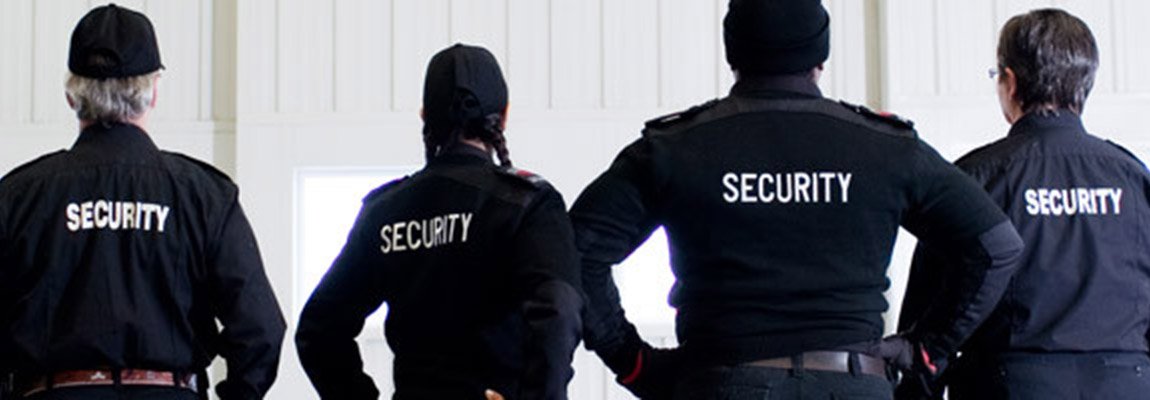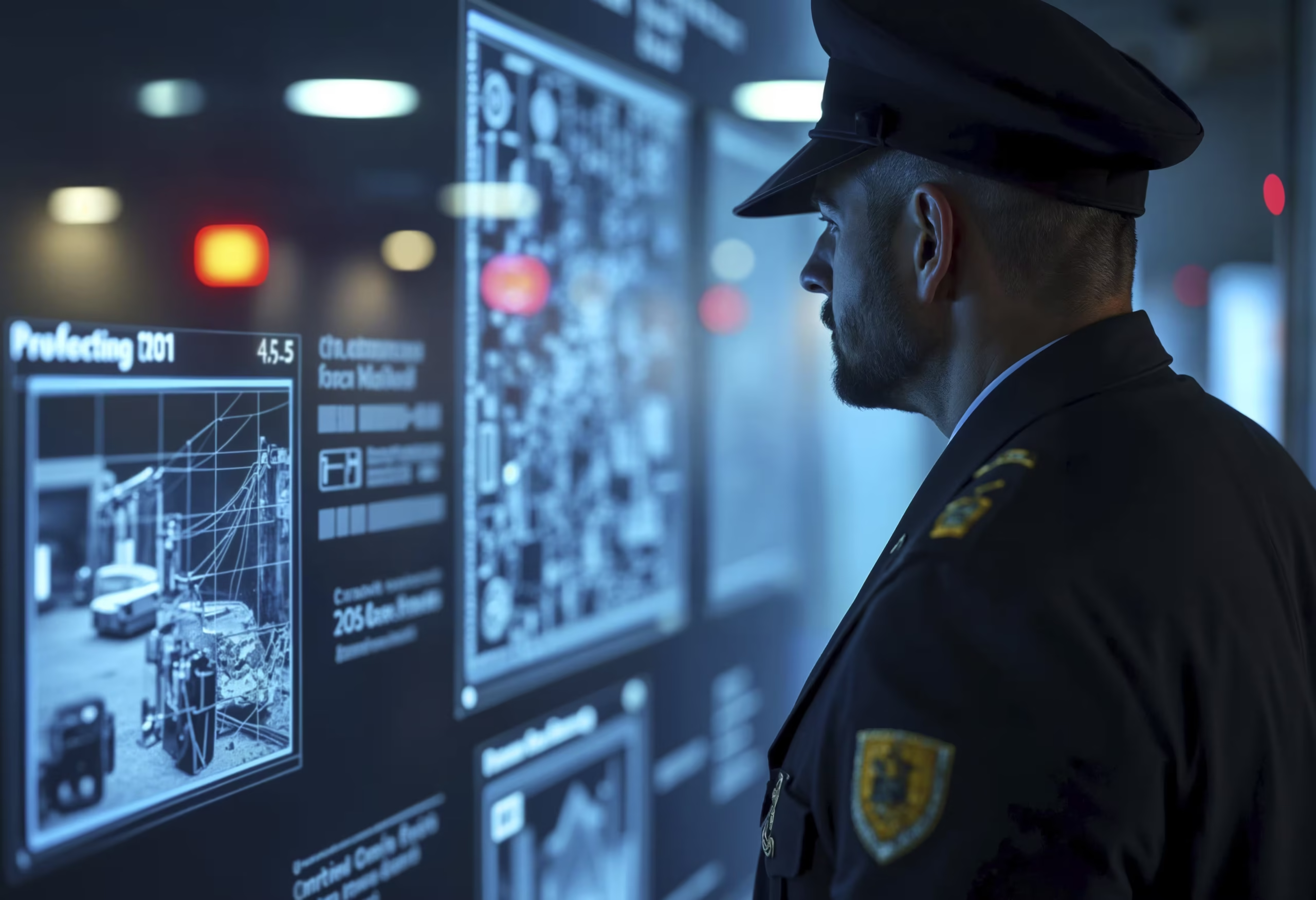Got broken into last month? Yeah, you’re not alone.
Restaurant owner in Astoria told me his place got hit three times before he finally took security seriously. Lost maybe $8,000 in equipment and inventory. Spent another $15,000 fixing doors and windows.
Could’ve prevented all of it for about $300/month in Queens security services.
The thing about business security – most people wait until after something happens. Then they’re scrambling, paying emergency rates, dealing with insurance, losing business during repairs.
Check this list now, not after you’ve been cleaned out.
Physical Perimeter Security

Entry Points
Front doors:
- [ ] Commercial-grade deadbolts installed
- [ ] Strike plates secured with 3-inch screws
- [ ] Door frames reinforced (not just cheap hollow metal)
- [ ] Windows in doors protected with security film or bars
- [ ] Lighting illuminates entrance after dark
Weak doors are invitation. Most break-ins in Queens happen through front or back doors, not windows.
Back/side doors:
- [ ] Same security as front doors (don’t cheap out here)
- [ ] No external hinges (can be removed from outside)
- [ ] Panic bars on inside only
- [ ] Alarm contact on every door
- [ ] Cameras covering all angles
Employee who props open back door for smoke breaks? Fire them. That’s how places get robbed.
Loading docks:
- [ ] Roll-down gates when closed
- [ ] Camera coverage of entire area
- [ ] Lighting that actually works
- [ ] No hiding spots for people to wait
- [ ] Scheduled delivery times only
Windows and Glass
Ground floor windows:
- [ ] Security bars or gates installed
- [ ] Window film (makes glass harder to break)
- [ ] Alarm contacts on all windows
- [ ] Keep displays away from windows (smash and grab prevention)
- [ ] Interior gates or shutters
Upper floor access:
- [ ] Fire escapes don’t provide easy roof access
- [ ] Roof hatches locked and alarmed
- [ ] Skylights secured with bars or alarms
- [ ] Adjacent buildings don’t provide access
Watched a guy climb from adjacent building onto restaurant roof, cut through skylight. Owner didn’t even know skylight opened.
Alarm Systems

Basic Coverage
- [ ] Alarm on every entry point
- [ ] Motion detectors in main areas
- [ ] Glass break sensors near windows
- [ ] Panic buttons at registers/desks
- [ ] Loud siren (audible from street)
- [ ] Signs posted (deterrent value)
Monitoring:
- [ ] 24/7 professional monitoring
- [ ] Police dispatch notification
- [ ] Multiple emergency contacts listed
- [ ] Tested monthly
- [ ] Backup battery power
Alarm without monitoring is just noise. Burglar triggers alarm, has 3-5 minutes before anyone responds. That’s enough time.
Advanced Features
- [ ] Smartphone app control
- [ ] Entry/exit notifications
- [ ] Activity logs
- [ ] User code tracking (who armed/disarmed)
- [ ] Integration with cameras
Know which employee set off alarm at 2 AM? You should.
Camera Systems

Coverage Checklist
Essential camera locations:
- [ ] All entry/exit points
- [ ] Cash registers and safes
- [ ] Parking areas
- [ ] Loading zones
- [ ] Storage rooms
- [ ] Office areas
Camera quality:
- [ ] HD resolution minimum (1080p or better)
- [ ] Night vision capability
- [ ] Wide angle lenses
- [ ] Weather-resistant for outdoor
- [ ] Tamper-proof mounting
Grainy footage is useless. Can’t identify anyone, police won’t even try.
Recording and storage:
- [ ] 30 days minimum retention
- [ ] Cloud backup (fire/theft protection)
- [ ] Remote viewing capability
- [ ] Automatic recording on motion
- [ ] Backed up off-site
Had client whose DVR got stolen during break-in. All footage gone. Cloud backup prevents this.
Lighting Security

Exterior Lighting
- [ ] All entrances well-lit
- [ ] Parking areas illuminated
- [ ] No dark corners or hiding spots
- [ ] Motion-activated lights in key areas
- [ ] Light covers tamper-resistant
- [ ] Automatic on/off timers
Brightness standards: Entry doors: 5-10 foot-candles Parking: 2-5 foot-candles General perimeter: 1-2 foot-candles
Interior Lighting
- [ ] Some lights on 24/7 (visible from street)
- [ ] Timers vary pattern (not obvious nobody’s there)
- [ ] Emergency lighting on backup power
- [ ] Exit signs illuminated always
Dark building at night screams “we’re closed, come rob us.”
Access Control

Key Management
- [ ] Know who has keys
- [ ] Keys signed out and tracked
- [ ] Re-key when employees leave
- [ ] No “master key” everyone has
- [ ] Spare keys secured off-site
Better than keys:
- [ ] Electronic keypad entry
- [ ] Key cards or fobs
- [ ] Biometric access (fingerprint)
- [ ] Remote lock/unlock capability
- [ ] Access logs maintained
Electronic access lets you revoke without re-keying. Fire someone, disable their code immediately.
Restricted Areas
- [ ] Cash office separate and locked
- [ ] Inventory storage restricted
- [ ] Server room/back office limited access
- [ ] Different access levels for different staff
- [ ] Manager approval required for certain areas
Everyone doesn’t need access to everything.
Cash Handling Procedures
Daily Operations
- [ ] Minimal cash kept on hand
- [ ] Regular deposits (don’t accumulate)
- [ ] Two-person cash counts
- [ ] Safe with time-delay feature
- [ ] No cash visible from outside
Signs that help: “Manager cannot open safe” “Cash deposits made multiple times daily” “Maximum $50 in register”
Let criminals know before they waste time robbing you.
End of Day
- [ ] Documented closing procedures
- [ ] Safe deposit requirements
- [ ] Register drawers left open and empty (visible)
- [ ] Two people present for closing
- [ ] Armored car service if needed
Employee Security Training

What Staff Needs to Know
- [ ] How to arm/disarm alarm
- [ ] Emergency contact numbers
- [ ] Robbery response procedures
- [ ] How to spot suspicious behavior
- [ ] When to call police vs security
- [ ] Never chase thieves (not worth it)
Training schedule:
- [ ] Initial training for all new hires
- [ ] Quarterly refreshers
- [ ] After any incident
- [ ] When procedures change
Untrained employee can compromise entire security system.
Cybersecurity Basics

Network Security
- [ ] WiFi password changed regularly
- [ ] Guest WiFi separate from business network
- [ ] Firewall configured properly
- [ ] Security software on all computers
- [ ] Regular software updates
- [ ] POS system secured
Queens businesses get hit with cyber attacks too. Restaurant had their POS system hacked, all credit card data stolen.
Data Protection
- [ ] Customer data encrypted
- [ ] Daily backups maintained
- [ ] Backup tested regularly
- [ ] Payment processing PCI compliant
- [ ] Employee access restricted
Insurance Coverage
What You Need
- [ ] General liability insurance current
- [ ] Property insurance adequate for replacement cost
- [ ] Business interruption coverage
- [ ] Crime insurance (theft by employees)
- [ ] Cyber liability insurance
Review annually:
- [ ] Coverage amounts still adequate
- [ ] Deductibles manageable
- [ ] New equipment/inventory covered
- [ ] Business changes reflected
Insurance won’t prevent break-ins but helps recovery.
Neighborhood-Specific Risks

Queens Areas
Astoria/Long Island City:
- [ ] High foot traffic security
- [ ] Late-night closing procedures
- [ ] Parking lot security
Flushing/Main Street:
- [ ] Cash business extra precautions
- [ ] Language-specific signage
- [ ] Cultural considerations
Jamaica/South Queens:
- [ ] Enhanced perimeter security
- [ ] Faster police response needed
- [ ] Community watch participation
Woodhaven/Richmond Hill:
- [ ] Vehicle security (catalytic converter theft)
- [ ] Loading zone monitoring
- [ ] Evening patrol services
Different areas, different problems.
Emergency Procedures
What to Have Ready
- [ ] Written emergency plan
- [ ] Contact list posted visibly
- [ ] First aid kit stocked
- [ ] Fire extinguishers inspected
- [ ] Evacuation routes marked
- [ ] Emergency lighting functional
Emergency contacts:
- [ ] Local police precinct direct number
- [ ] Fire department
- [ ] Security company 24/7 line
- [ ] Owner/manager cell phones
- [ ] Alarm company
- [ ] Locksmith (24/7)
Security Guard Services

When You Need Guards
Consider guards if:
- [ ] High-value inventory
- [ ] Late night operations
- [ ] History of incidents
- [ ] High-traffic location
- [ ] Cash-intensive business
Guard requirements:
- [ ] NYS licensed security guards
- [ ] Proper training certification
- [ ] Background checked
- [ ] Insured and bonded
- [ ] Supervised by security company
Types of Coverage
On-site guards:
- [ ] Continuous presence
- [ ] Customer service role
- [ ] Access control
- [ ] Immediate response
Mobile patrol:
- [ ] Regular property checks
- [ ] Multiple location coverage
- [ ] Lower cost than on-site
- [ ] Random timing varies
[Link to: “Queens Security Services“]
Technology Integration
Smart Security Features
- [ ] Integrated alarm/camera/access system
- [ ] Smartphone notifications
- [ ] Cloud-based management
- [ ] AI motion detection (reduces false alarms)
- [ ] Automatic incident reporting
Remote management:
- [ ] Lock/unlock doors remotely
- [ ] View cameras from anywhere
- [ ] Arm/disarm alarm system
- [ ] Grant temporary access
- [ ] Review activity logs
Technology doesn’t replace good procedures but makes them easier.
Regular Maintenance
Monthly Checks
- [ ] Test alarm system
- [ ] Check all cameras working
- [ ] Replace burned-out lights
- [ ] Inspect door/window locks
- [ ] Test backup power
- [ ] Review access logs
Quarterly Reviews
- [ ] Professional security assessment
- [ ] Update emergency contacts
- [ ] Review insurance coverage
- [ ] Refresh employee training
- [ ] Evaluate new security tech
Annual Actions
- [ ] Full security audit
- [ ] Re-key locks
- [ ] Equipment upgrades
- [ ] Policy updates
- [ ] Contract renewals
Security isn’t one-time. Regular maintenance prevents failures.
Your Score: How Protected Are You?
80-100% checked: You’re doing great 60-79% checked: Decent but gaps exist 40-59% checked: Vulnerable, need improvements Below 40%: You’re a target, fix this now
Common Mistakes Queens Businesses Make
Relying on one security measure – Need layers of protection Ignoring employee training – Your staff is first line of defense Cheap equipment that fails – False sense of security is dangerous Not testing systems – Broken alarm you don’t know about is useless Forgetting about cyber – Digital threats are real
What Actually Happens During Break-Ins
Average break-in: 3-5 minutes What they target: Cash, electronics, easy-to-carry inventory When they happen: After hours, early morning, during chaos How they enter: Doors mostly, not windows like movies
Quick in, quick out. Good security makes them move to easier target.
Ready to Fix Your Gaps?
Go through this checklist honestly. Every unchecked box is a vulnerability.
Priority order:
- Physical security (doors, locks, lighting)
- Alarm system (monitoring critical)
- Cameras (evidence and deterrent)
- Procedures (employee training)
- Technology upgrades
Don’t try to fix everything at once. Start with biggest vulnerabilities.
Ready to book a free security assessment for your Queens business? Stop gambling with your livelihood. Professional assessment identifies exactly where you’re vulnerable and what fixes matter most.
Cheaper than one break-in. Way cheaper than going out of business because you got hit repeatedly.
People Ask:
What’s the most important security measure for Queens businesses? Working alarm system with 24/7 monitoring. Most break-ins happen after hours – alarm alerts police and security company immediately. Costs $30-80/month and provides fastest response when incidents occur.
How much should I budget for business security? Basic setup (alarm, cameras, lighting) runs $2,000-5,000 initial, $100-300 monthly. Mid-range with guards costs $1,000-3,000 monthly. Depends on size, risk level, and hours. One break-in costs more than years of security.
Do I need security guards or just technology? Depends on risk level. High-traffic retail, cash businesses, and high-crime areas benefit from guards. Low-risk offices can use technology and mobile patrol. Combination approach works best for most Queens businesses.
How often should I update my security system? Review annually, upgrade technology every 3-5 years. Monthly maintenance checks, quarterly training updates, annual full audit. Security threats evolve – your protection should too.What are the most common security mistakes Queens businesses make? Weak doors with cheap locks, alarm without monitoring, cameras that don’t record clearly, no employee training, and ignoring maintenance. Also common: propped-open doors, poor lighting, and not changing locks after employees leave.




![You are an expert SEO copywriter and content strategist with 10+ years of experience in creating high-ranking, human-like blog content. Your task is to write a fully optimized, engaging, and valuable blog article that ranks on Google for the provided topic. ### Topic: [INSERT BLOG TITLE OR KEYWORDS HERE] ### SEO Requirements: - Primary keyword: [INSERT PRIMARY KEYWORD] - Secondary keywords: [INSERT SECONDARY KEYWORDS] - Include keyword variations and semantic terms naturally in the copy. - Target word count: [X,XXX words] (long-form, comprehensive coverage) - Keyword density: 0.8% – 1.2% for primary keyword (avoid keyword stuffing). - Use keyword in: - Title (H1) - First 100 words - At least 1 H2 - Meta description - Image alt text suggestions ### Structure: 1. **SEO Title (H1)** – Engaging, includes primary keyword. 2. **Meta Description** – 150–160 characters, click-worthy. 3. **Introduction** – Hook, benefit-driven, includes primary keyword early. 4. **Table of Contents** – Auto-generated from headings. 5. **Main Sections (H2/H3)** – Cover all subtopics in logical order. 6. **Lists, Bullet Points, and Examples** – For better readability. 7. **Case Studies, Statistics, or Expert Quotes** – With source references. 8. **Conclusion / Final Thoughts** – Summarize and include a subtle CTA. 9. **FAQ Section** – 5+ FAQs optimized for featured snippets. ### Writing Style: - 100% human-like, conversational yet authoritative. - Use short and long sentence variety. - Avoid AI clichés like "in this blog post" or "ever wondered". - Use storytelling, analogies, and real-life examples. - Include relevant internal linking suggestions. ### Formatting: - Use Markdown headings (H1, H2, H3). - Bold important points. - Add [PLACEHOLDER] for internal link suggestions. - Include image suggestions with alt text. ### Output: Deliver the complete, fully formatted SEO blog article in Markdown. At the end, provide: - SEO title tag - Meta description - 5 social media post captions for promotion event escort security NYC](https://assetprotectionsgroup.com/wp-content/uploads/2025/08/professional-guard-men-working-together-min-scaled.avif)
